Our Furry friends have many different looks, and the coat types in dogs are one of the most obvious ways to tell them apart. Different dog coat types can be short and smooth, long and flowing, or even tangled and rough. Understanding the coat types in dogs is important for people who want to have dogs because it helps them figure out what kind of care each breed needs in terms of grooming, shedding, and general care.
Table of Contents
Introduction
In this piece, we’ll talk about the three main coat types in dogs: short, long, and wire. By learning about the traits and care needs of each type of coat, you will be better able to choose a dog that fits your lifestyle and tastes.

Short Coat Dog Breeds
Short coat dog breeds are also called smooth or sleek coats. They have fur that fits close to the body and requires little care. The hair on these dogs is thick, and smooth, and lies flat against their bodies. The Labrador Retriever, the Boxer, and the Dalmatian are some of the best small short haired dog breeds. Here are the most important things to know about your short haired furry friend and how to care for them:
Characteristics: The short coat dog breeds have many unique traits that affect how they look and how much care they need. Their hair is usually shiny and doesn’t get tangled easily, which makes it easy to care for. Also, these dogs shed less than the long haired breeds. Even within the best small short haired dog breeds, we can notice different patterns of colors and even lengths.
Grooming: Most of the short coat dog breeds need to be brushed regularly to get rid of loose hair and keep their coats healthy. This also helps spread natural oils, promoting a shiny appearance. Use a light shampoo made for dogs when you need to bathe your dog or when it gets dirty. Since these dogs’ fur is shorter, it dries quickly and doesn’t get tangled as easily.
Seasonal Shedding: Even though the short coat dog breeds tend to shed less overall, they may still shed during certain times of the year. During these times, it’s best to brush more often to reduce the amount of loose hair in the surroundings. A well-balanced diet for some of the best small short-haired dog breeds will be high in important fatty acids and can also help keep the skin and coat healthy, which can cut down on excessive shedding.
When it comes to grooming and upkeep, short-coat dog breeds have a clear edge. To keep their smooth coats looking good, they need less care. Regular brushing gives you and your dog a chance to spend time together and keeps their coat free of loose hair and tangles. Brushing also makes their skin feel good and spreads their natural oils, which gives their fur a healthy shine.
Even the best small short-haired dog breeds need careful washing. It’s best to take things slowly. They don’t need to be washed as often as long-haired dogs. They know how to keep themselves clean on their own. But if your dog gets dirty or stinky, it’s best to use a mild shampoo made for dogs and make sure to rinse it well to get rid of any soap residue that could hurt their skin.
While the best small short haired dog breeds shed less compared to their long-coated counterparts, they are not fully immune to shedding. When hair falls out, like in the spring and fall, you may see more free hair. Brushing regularly during these times can help get rid of the extra hair and reduce how much of it is in your home. By giving them a well-balanced diet with important fatty acids like omega-3s, you can also improve the health of their skin and coat, which will make them shed less.
In conclusion, the best small short haired dog breeds are easier to care for because they need less cleaning. With their shiny, smooth coats, these dogs need to be brushed often to keep their fur in good shape. Shedding is less of a problem, but it can happen seasonally. Brushing and a healthy diet can help with this. Overall, short coat dog breeds are a great choice for people who want a dog that looks good and doesn’t need much cleaning.
Long Coat Types In Dogs
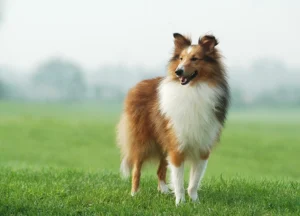
Long haired breeds are known for having fur that flows and looks beautiful. These dogs have thick, often silky hair that needs to be brushed and cared for regularly. The Afghan dog, Shih Tzu, and Collie are all popular breeds with long coats. Let’s look at what makes long coated breeds stand out from different dog coat types and how to care for them:
Characteristics: Long-coated breeds hold strikingly beautiful coats. Even within the long haired category, there are different dog coat types that can vary in texture, from straight and silky to wavy or even curly. Because their fur is long and thick, it needs more care to keep it from getting matted and tangled. Also, dogs with long coats tend to shed more than the rest of the different dog coat types.
Grooming: Grooming is an important part of taking care of long-haired dogs. To avoid knots and mats, you need to brush your hair often. Dog owners should buy good brushes and combs that are right for their dog’s fur. Trimming the hair around the paws and ears can help keep the pet clean and stop dirt from building up. To keep the hair healthy and looking good, it may need to be groomed by a professional regularly.
Managing Shedding: Unlike other different dog coat types, long haired types tend to shed all year long, and there may be times of the year when they shed more. Frequent brushing helps get rid of free hair and reduces the amount of hair that gets all over the house. Proper nutrition, including omega-3 fatty acids, can contribute to coat health and prevent excessive shedding. A healthy coat is also affected by having a balanced diet and getting regular exercise.
Matting Prevention: Long-coated breeds are more prone to matting as compared to the other different dog coat types. This is because of the length and density of their fur. Matting happens when loose hairs tangle and form clumps. To keep long-haired dogs from matting, it’s important to brush them well, paying special attention to places where the hair is likely to get tangled, like behind the ears, under the armpits, and around the tail. Knots and kinks can be easier to get rid of if you use a detangling spray or conditioner.
Long-haired dogs are known for having beautiful, soft coats. But these beautiful coats need to be cared for and cleaned regularly. To avoid tangles and mats, you need to brush your hair every day, which can take time but is worth it. High-quality brushes and combs made for long-haired breeds should be used to avoid discomfort or damage to the dog’s fur.
They need more care as compared to other categories of different dog coat types. In addition to brushing every day, the hair needs to be professionally groomed every few weeks to keep it healthy and looking good. Professional groomers know how to cut hair around sensitive areas like the hands and ears. This keeps the area clean and lowers the risk of irritations or infections.
Even though these dogs may shed more than other categories of different dog coat types, they can be kept under control with the right care and diet. Adding omega-3 fatty acids to their food can help keep their coats healthy and stop them from shedding too much. Along with a healthy diet, daily exercise is important for a healthy coat because it helps blood flow and keeps the coat healthy.
To keep hair from sticking, it’s important to brush it well and pay close attention to areas where tangles tend to happen. Common trouble spots are behind the ears, under the arms, and around the tail. Using a detangling spray or conditioner can make brushing your dog’s hair easier and less painful.
Long-haired types are known for their beautiful coats, but they need to be groomed often to keep their looks and keep their hair from matting. Daily brushing and professional grooming sessions are required to manage shedding and keep the coat healthy
Note: There might be affiliate links mentioned here. We may receive a commission if you purchase a product through an affiliate link. There is no additional charge for you. Please do your own research before making any online purchases.
Wire Haired Coat Types In Dogs
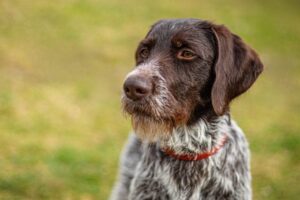
Wire-haired dog types stand out from the other different types of dog fur because their fur is coarse and rough, giving them a unique look. The top layer of these dogs’ coats is wiry and thick, and the undercoat is softer. The Schnauzer, the Airedale Terrier, and the Wire Fox Terrier are all popular dogs with wire hair. Let’s look at what makes wire-haired breeds stand out from the other different types of dog fur and how to care for them:
Wire-haired types are easy to tell apart because their coats have different textures. Their top coat is made of stiff, wiry hairs that protect them and make them last longer. The layer keeps you warm and helps keep your body temperature even. Even within the wire haired breeds, there are different types of dog fur, many different colors and textures can be noticed.
Grooming: Wire-haired dogs need to be hand-stripped and brushed regularly to look their best. Hand-stripping is the process of removing dead hairs from the body by hand. This helps new hair grow and keeps the texture right. This should be done by a professional groomer or with their help so the dog doesn’t feel uncomfortable or get hurt. Regular brushing gets rid of free hair, stops mats from forming, and spreads natural oils for a healthy coat.
Care for the coat: Wire-haired dogs need to be bathed less often than other dogs with different types of dog fur. Too many baths can strip the coat of its natural oils, which can make the skin dry and itchy. Instead, you should only need to bathe your dog occasionally with a light shampoo made just for dogs. The hair around the ears and paws needs to be trimmed to keep it clean and stop it from sticking. To keep the coat’s structure and look, it’s best to have it groomed by a pro on a regular basis.
Shedding and Allergies: Some wire-haired types are thought to be hypoallergenic because their wiry coats tend to trap dander and allergens, making them less likely to spread around the environment. But it’s important to remember that all dogs make some allergens, and people’s allergies can be different with different types of dog fur. Even though wire-haired dogs shed less than some others, they still need to be brushed regularly to get rid of loose hair and keep allergens from building up.
Wire-haired breeds look different and special as compared to the rest of the different types of dog fur because their fur is coarse and rough. Their outer coats are made up of stiff, wiry hairs that cover and strengthen them. On the other hand, the fur helps control their body temperature and keeps them warm.
Wire-haired dogs need to be groomed by hand-stripping and brushing regularly. Hand-stripping is the process of removing dead hairs from the body by hand so that the texture stays right and new hair grows. This should be done by a professional groomer or with their help because if it’s not done right, hand-stripping can hurt the dog.
A healthy coat also needs to be brushed regularly to get rid of loose hair, stop mats from forming, and spread natural oils. Because the structure of the wire-haired coat helps trap dander and allergens, these breeds may be somewhat hypoallergenic. But it’s important to remember that everyone’s allergies are different and brush regularly to keep allergens from building up.
Wire-haired dogs don’t need to be bathed as often as other dogs with different types of dog hair . Too many baths can strip the coat of its natural oils, which can make the skin dry and irritated. Using a light shampoo made for dogs once in a while should be enough to keep them clean. It’s important to keep the hair around the ears and hands clean and to keep it from getting tangled up.
Wire-haired dogs should be groomed by a professional at least once a month. Professional groomers are trained with handling different types of dog hair, they have the ability to keep the texture and appearance of the coat. They can also do things like trim the dog’s nails and clean its ears to make sure the dog is healthy and happy overall.
In short, the coarse and rough fur of wire-haired types gives them a look that is unique and stands out. Hand-stripping and regular cleaning are both parts of grooming these dogs. They need to be bathed less often than other dogs with different types of dog hair. They should be groomed by a professional every once in a while to keep the texture and look of their hair. Due to the texture of their hair, wire-haired types may not cause allergies, but they still need to be brushed regularly to keep allergens from building up.
Medium Coat Dog Breeds
Medium coat dog breeds are a popular choice for many dog owners due to their balanced grooming needs and versatile appearances. These breeds typically have fur that is longer than short coats but not as long as long coats, offering a happy medium in terms of maintenance and care. Here, we’ll explore some of the most beloved medium coat dog breeds, their characteristics, and their grooming requirements.
Characteristics of Medium Coat Dog Breeds
Medium coat dogs often have a double coat, consisting of a dense undercoat and a longer topcoat. This type of coat provides excellent insulation, making these breeds well-suited for various climates. The fur can range from straight to wavy and may require regular brushing to prevent tangles and matting. Medium coat dogs are known for their diverse appearances and can be found in a variety of colors and patterns.
Popular Medium Coat Dog Breeds
| Breed | Description | Grooming Needs | Care Needs | Cost |
|---|---|---|---|---|
| German Shepherd | Intelligent, loyal, versatile; often used in police and military roles | Regular brushing to manage shedding | High exercise, mental stimulation, social interaction | $500 – $1,500 |
| Golden Retriever | Friendly, tolerant, great with children; known for intelligence and trainability | Regular grooming to manage heavy shedding | High exercise, social interaction, mental stimulation | $500 – $3,000 |
| Australian Shepherd | Highly intelligent and energetic; excels in agility and herding | Regular brushing to prevent matting | High exercise, mental stimulation, social interaction | $600 – $1,800 |
| Siberian Husky | Endurance, friendly nature, striking appearance; often used in sledding | Regular brushing to manage shedding | High exercise, mental stimulation, social interaction | $600 – $1,500 |
| Border Collie | Highly intelligent and energetic; excels in herding and agility | Regular brushing to prevent matting | High exercise, mental stimulation, social interaction | $500 – $1,500 |
| Collie | Gentle and friendly; great with children | Regular grooming to manage long, flowing coat | Moderate exercise, social interaction, mental stimulation | $600 – $1,200 |
| Bernese Mountain Dog | Large, gentle, affectionate; known for calm demeanor and loyalty | Regular brushing to manage shedding | Moderate exercise, social interaction, mental stimulation | $1,000 – $2,500 |
| Samoyed | Friendly, gentle, beautiful white coat; great with children and other pets | Regular grooming to manage heavy shedding | High exercise, social interaction, mental stimulation | $1,000 – $3,000 |
Grooming and Care Tips for Medium Coat Dogs
- Regular Brushing: Medium coat dogs require regular brushing to prevent tangles and matting. Use a slicker brush or a comb designed for medium coats to remove loose hair and keep the coat healthy.
- Bathing: Bathe your medium coat dog as needed, typically every 4-6 weeks. Use a dog-specific shampoo to avoid skin irritation.
- Shedding Management: Many medium coat breeds shed seasonally. During these times, increase the frequency of brushing to manage shedding and keep your home clean.
- Ear and Teeth Care: Regularly check and clean your dog’s ears to prevent infections. Brush their teeth several times a week to maintain oral health.
- Exercise and Mental Stimulation: Medium coat breeds often have high energy levels and require regular exercise and mental stimulation. Engage them in activities such as fetch, agility training, and puzzle toys to keep them happy and healthy.
- Diet and Nutrition: Provide a balanced diet tailored to your dog’s age, size, and activity level. Consult your veterinarian for specific dietary recommendations.
Conclusion
Medium coat dog breeds offer a perfect balance of grooming needs and versatility. Whether you’re looking for an active companion like the Australian Shepherd or a gentle family pet like the Collie, there’s a medium coat breed that can fit your lifestyle. Regular grooming and proper care are essential to keep these dogs healthy and happy. By understanding their needs and characteristics, you can ensure a fulfilling and joyful relationship with your medium coat dog.
Smooth Coat Dog Breeds
Smooth coat dog breeds are known for their sleek, short fur that lies close to the body. These coats are relatively low-maintenance compared to longer or double coats, making them a popular choice for busy pet owners. Smooth coat dogs come in various sizes and temperaments, offering a wide range of options for potential dog owners. In this section, we’ll explore some of the most popular smooth coat dog breeds, their characteristics, and grooming needs.
Characteristics of Smooth Coat Dog Breeds
Smooth coat dogs typically have short, glossy fur that requires minimal grooming. Their coats are easy to care for, but they still benefit from regular brushing to remove loose hair and keep their skin healthy. These breeds often have a clean appearance and are less prone to matting and tangling compared to longer-coated breeds. However, they can still shed, so regular grooming is essential to manage shedding and maintain a healthy coat.
Popular Smooth Coat Dog Breeds
| Breed | Description | Grooming Needs | Care Needs | Cost |
|---|---|---|---|---|
| Chihuahua | Smallest dog breed, big personality, loyal | Minimal grooming; regular brushing | Moderate exercise, social interaction, mental stimulation | $500 – $1,500 |
| Dachshund | Small, lively, suitable for apartment living | Minimal grooming; regular brushing | Moderate exercise, watch for back issues | $500 – $1,500 |
| French Bulldog | Compact, affectionate, adaptable | Minimal grooming; regular brushing, attention to facial wrinkles | Moderate exercise, watch for overheating | $1,800 – $4,500 |
| Boxer | Energetic, playful, great with children | Minimal grooming; regular brushing | High exercise, social interaction | $700 – $2,500 |
| Whippet | Sleek, gentle, great for families | Minimal grooming; regular brushing | Moderate exercise, social interaction | $600 – $1,500 |
| Beagle | Friendly, curious, great with children and other pets | Minimal grooming; regular brushing | High exercise, social interaction | $400 – $1,200 |
| Boston Terrier | Small, friendly, tuxedo-like coat | Minimal grooming; regular brushing, attention to facial wrinkles | Moderate exercise, social interaction | $800 – $2,500 |
| Dalmatian | Distinctive spotted coat, energetic | Minimal grooming; regular brushing | High exercise, social interaction | $1,000 – $2,500 |
| Basenji | Barkless dog, clean, independent | Minimal grooming; regular brushing | Moderate exercise, social interaction | $800 – $1,500 |
| Italian Greyhound | Small, elegant, gentle, affectionate | Minimal grooming; regular brushing | Moderate exercise, social interaction | $1,000 – $2,000 |
Grooming and Care Tips for Smooth Coat Dogs
- Regular Brushing: Even though smooth coat dogs have short fur, regular brushing helps remove loose hair and keeps their coat shiny. Use a soft bristle brush or a grooming mitt for best results.
- Bathing: Smooth coat dogs generally require less frequent bathing. Bathe them as needed, typically every 4-6 weeks, using a dog-specific shampoo to avoid skin irritation.
- Ear and Teeth Care: Regularly check and clean your dog’s ears to prevent infections. Brush their teeth several times a week to maintain oral health.
- Exercise and Mental Stimulation: Smooth coat breeds often have high energy levels and require regular exercise and mental stimulation. Engage them in activities such as fetch, agility training, and puzzle toys to keep them happy and healthy.
- Diet and Nutrition: Provide a balanced diet tailored to your dog’s age, size, and activity level. Consult your veterinarian for specific dietary recommendations.
Curly, Wavy, or Fleece Coat Dog Breeds
Curly, wavy, or fleece coat dog breeds are known for their distinctive and often hypoallergenic coats. These breeds are popular for their unique appearance and the fact that they tend to shed less than other types of coats. However, they do require regular grooming to keep their coats healthy and free of mats. Here, we’ll explore some of the most popular curly, wavy, or fleece coat dog breeds, their characteristics, and grooming needs.
Characteristics of Curly, Wavy, or Fleece Coat Dog Breeds
Curly, wavy, or fleece coats can vary from loose waves to tight curls. These coats are often dense and can provide excellent insulation, making them suitable for various climates. Many of these breeds are considered hypoallergenic, meaning they are less likely to cause allergic reactions in people. However, no dog is completely hypoallergenic. Regular grooming is essential to prevent matting and keep the coat looking its best.
Popular Curly, Wavy, or Fleece Coat Dog Breeds
| Breed | Description | Grooming Needs | Care Needs | Cost |
|---|---|---|---|---|
| Poodle | Highly intelligent, hypoallergenic, curly coat | Regular grooming to prevent matting; professional grooming recommended | Moderate exercise, mental stimulation | $1,000 – $2,000 |
| Portuguese Water Dog | Strong swimmer, hypoallergenic, curly or wavy coat | Regular grooming to maintain coat health; professional grooming recommended | High exercise, mental stimulation | $1,500 – $2,500 |
| Bichon Frise | Small, cheerful, hypoallergenic, curly coat | Regular grooming to prevent matting; professional grooming recommended | Moderate exercise, social interaction | $500 – $1,500 |
| Labradoodle | Friendly, hypoallergenic, curly or wavy coat | Regular grooming to prevent matting; professional grooming recommended | High exercise, mental stimulation | $1,500 – $3,000 |
| Goldendoodle | Friendly, intelligent, hypoallergenic, curly or wavy coat | Regular grooming to prevent matting; professional grooming recommended | High exercise, mental stimulation | $1,500 – $3,000 |
| Cockapoo | Small, friendly, hypoallergenic, curly or wavy coat | Regular grooming to prevent matting; professional grooming recommended | Moderate exercise, social interaction | $800 – $2,000 |
| Irish Water Spaniel | Playful, hypoallergenic, curly coat | Regular grooming to prevent matting; professional grooming recommended | High exercise, mental stimulation | $1,000 – $2,500 |
| Lagotto Romagnolo | Friendly, intelligent, hypoallergenic, curly coat | Regular grooming to prevent matting; professional grooming recommended | Moderate exercise, mental stimulation | $1,500 – $2,500 |
| Curly-Coated Retriever | Friendly, hypoallergenic, curly coat | Regular grooming to prevent matting; professional grooming recommended | High exercise, mental stimulation | $1,000 – $2,000 |
| Pumi | Lively, energetic, hypoallergenic, curly coat | Regular grooming to prevent matting; professional grooming recommended | High exercise, mental stimulation | $1,000 – $2,000 |
Grooming and Care Tips for Curly, Wavy, or Fleece Coat Dogs
Regular Brushing: Curly, wavy, or fleece coat dogs require regular brushing to prevent matting and tangles. Use a slicker brush or a comb designed for curly coats.
Professional Grooming: Many curly-coated breeds benefit from professional grooming every 4-6 weeks to maintain their coat’s health and appearance.
Bathing: Bathe your dog as needed, typically every 4-6 weeks, using a dog-specific shampoo to avoid skin irritation.
Ear and Teeth Care: Regularly check and clean your dog’s ears to prevent infections. Brush their teeth several times a week to maintain oral health.
Exercise and Mental Stimulation: Curly-coated breeds often have high energy levels and require regular exercise and mental stimulation. Engage them in activities such as fetch, agility training, and puzzle toys to keep them happy and healthy.
Diet and Nutrition: Provide a balanced diet tailored to your dog’s age, size, and activity level. Consult your veterinarian for specific dietary recommendations.
Conclusion
It’s important for people who want to get a dog to know about the different types of dog hair so they can choose a breed that fits their tastes and lifestyle. Short coat dog breeds are low-maintenance, shed less, and need minimal grooming. Long haired breeds have beautiful, flowing fur that needs to be brushed and groomed regularly to keep it from sticking and shedding too much. Wire haired dogs have a coarse, unique coat that needs to be stripped by hand and sometimes done by a professional groomer. By knowing what kind of care different types of dog hair need, dog owners can give their pets the grooming, maintenance, and care they need to stay healthy and happy. Remember that different types of dog hair have their own beauty, in all unique ways, and picking the right one for you will help you and your furry friend get along for the rest of your lives.
FAQs
What are the three main coat types in dogs?
The three main coat types in dogs are: short, long, and wire-haired.
What are the traits of short coat dog breeds?
The short coat dog breeds are smooth and thick, and they lie flat against their bodies. Their fur is often glossy, doesn’t tangle easily, and they have a lower propensity for shedding compared to long-haired types.
How should I care for short coat dog breeds?
Short-coat dog breeds need to be brushed regularly to get rid of loose hair and keep a healthy coat. They need to be washed as needed with a light shampoo made for dogs. Breeds with short coats dry out quickly and are less likely to get matted.
Do short-coat dog breeds shed?
Even though short-coat dog breeds shed less overall, they may still shed during certain times of the year. During times when hair falls out, you should brush more often to reduce the amount of hair that falls out.
What are the traits of dogs with long coats?
Long-haired types have a thick, often silky coat that needs to be taken care of regularly. Their fur can have different textures, and they shed more often than short-coated types.
How should I care for a breed with a long coat?
Long-haired breeds need to be brushed regularly to avoid tangles and mats. They should be brushed and combed with high-quality tools that are right for their hair. The hair around the paws and ears needs to be trimmed, and the cat may need professional grooming on a frequent basis.
How can I handle shedding in long-coated breeds?
Long-haired dogs often shed all year long, and there may be times of the year when they shed more. Frequent brushing helps get rid of loose hair, and a healthy diet with omega-3 fatty acids can help keep the body healthy and stop too much hair loss.
How can I keep long-haired dogs from getting matted?
Matting can be avoided in long-haired breeds by brushing them well and paying special attention to places where the hair is likely to get tangled. Knots and kinks can be easier to get rid of if you use a detangling spray or conditioner.
What do wire-haired breeds have in common?
Wire-haired dogs have a special type of hair that is stiff and wiry. They usually have a thick top layer and a softer inner layer. The coats of wire-haired breeds come in different colors and may need to be hand-stripped to keep their texture and look.
How should I care for a dog with wire hair?
Wire-haired breeds need to be groomed by hand-stripping and cleaning regularly. Hand-stripping should only be done by or with the help of an expert groomer. A light shampoo made for dogs should be used for occasional baths, and the hair around the ears and paws should be trimmed.
Do dogs with wire hair shed?
Wire-haired dogs shed less than some other coat types, but they still need to be brushed regularly to get rid of loose hair and keep allergens from building up.
How often should I clean a dog with wire hair?
Wire-haired dogs need to be bathed less often so that their coats don’t lose their natural oils. Using a light shampoo made for dogs once in a while should be enough.




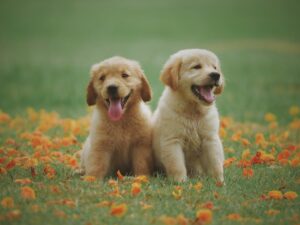

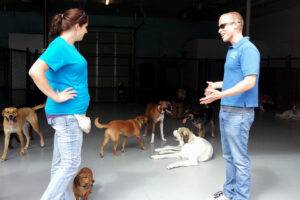
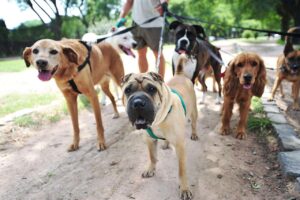
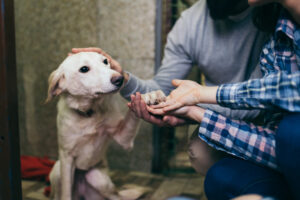









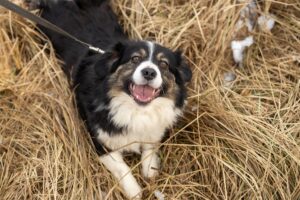
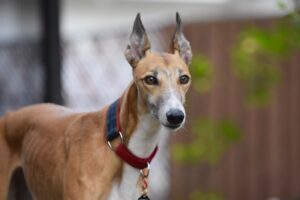



















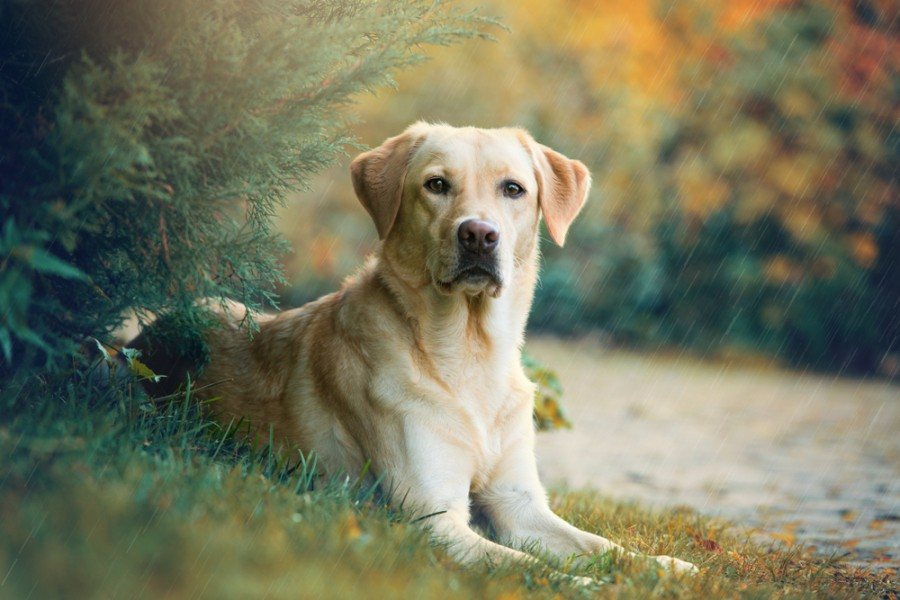
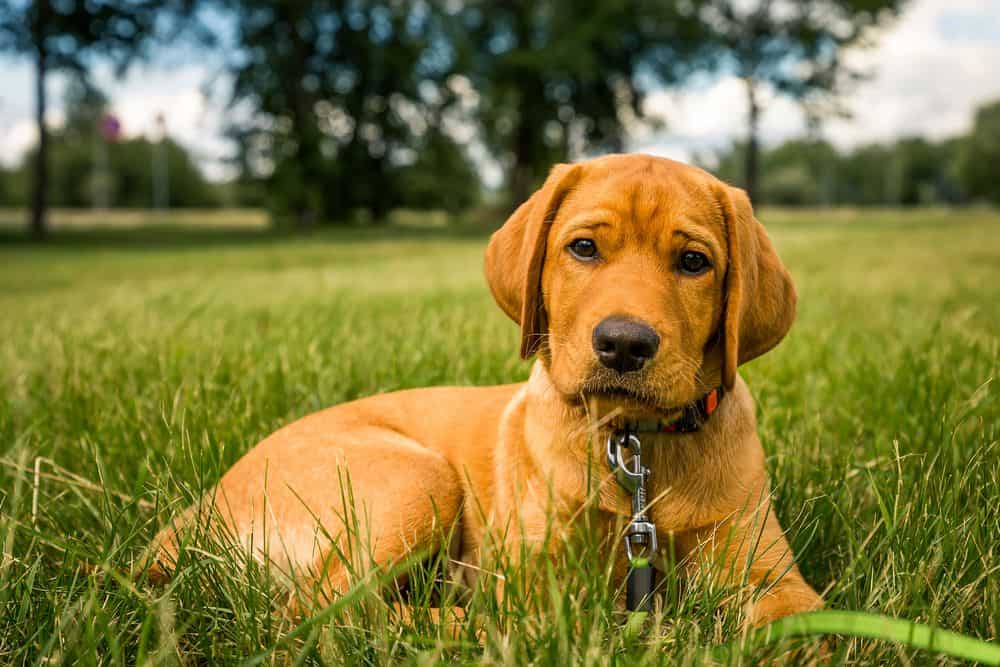
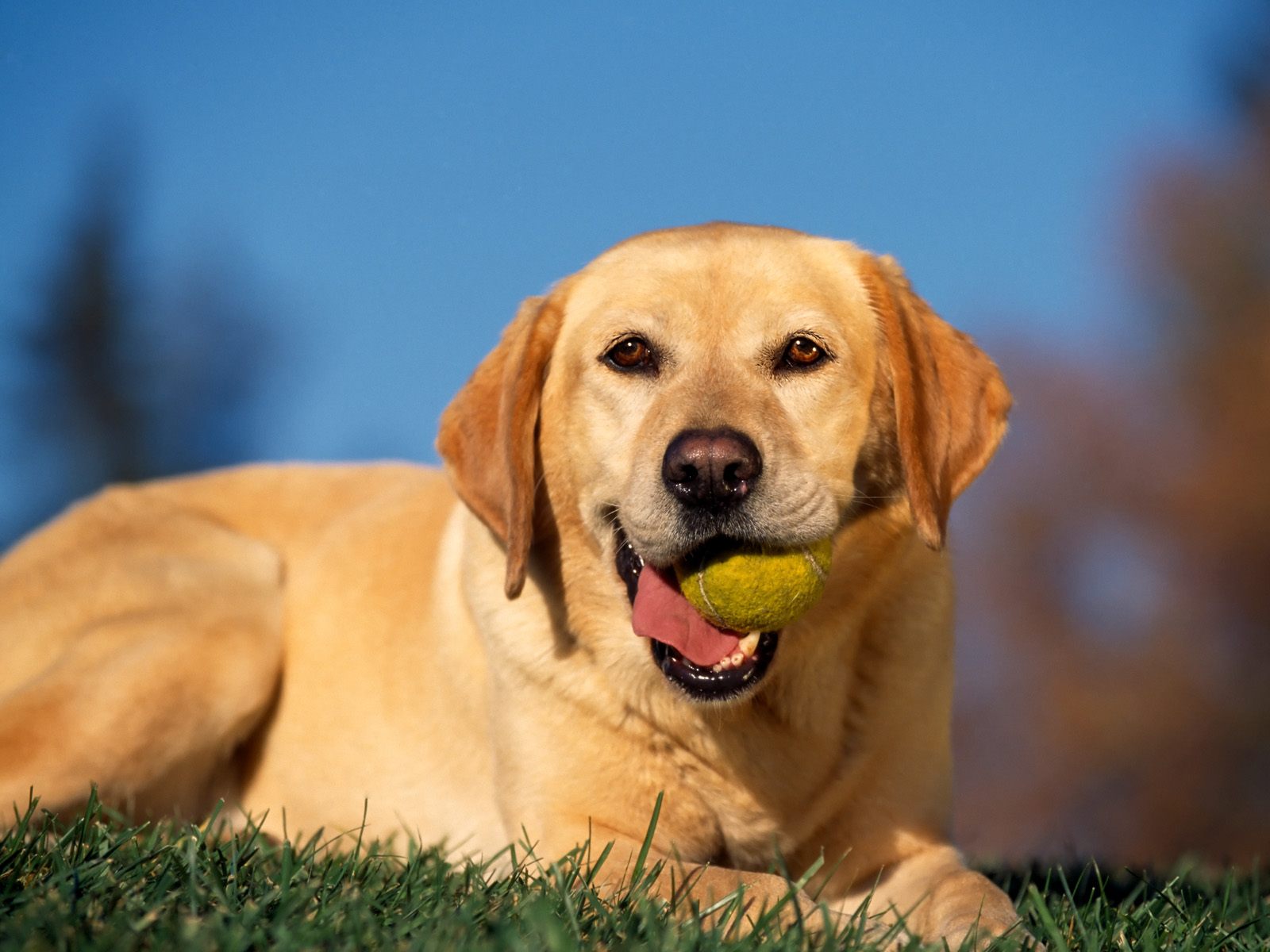
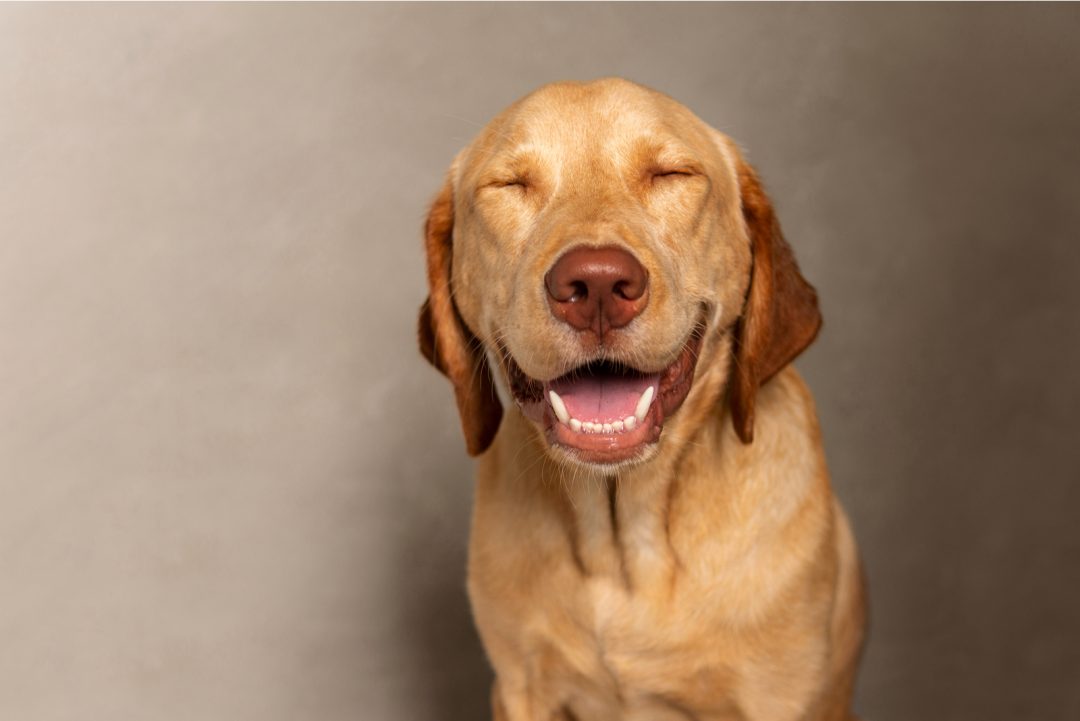
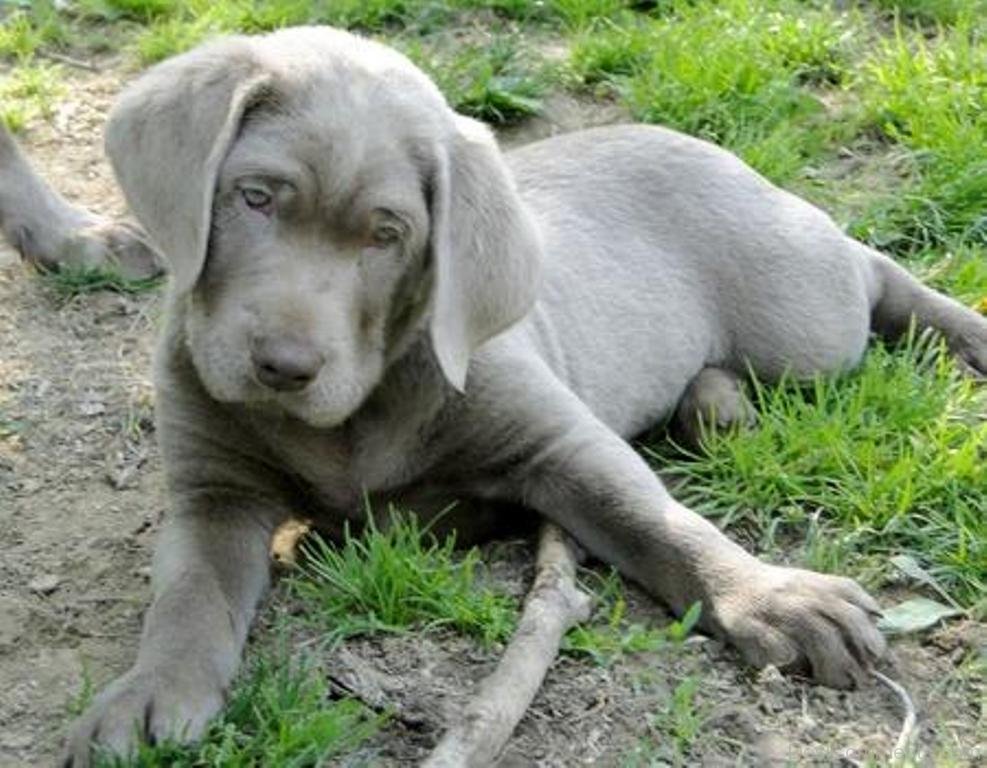



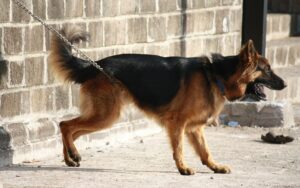









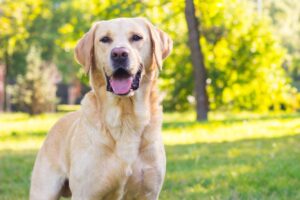
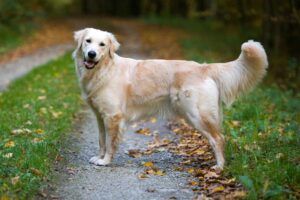
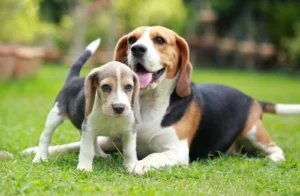
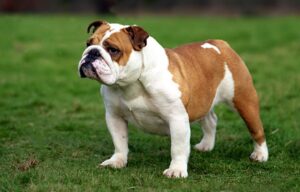
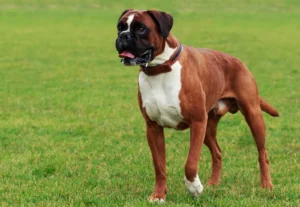
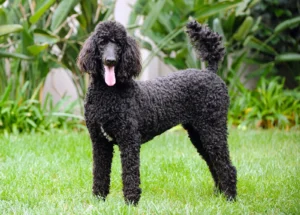

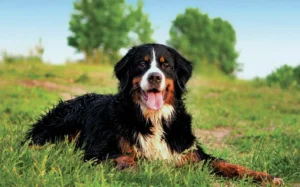
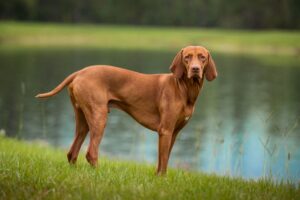

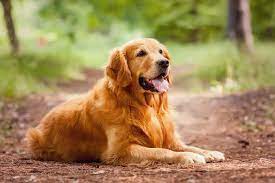

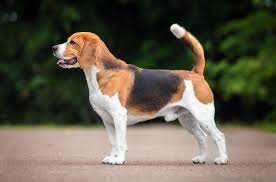



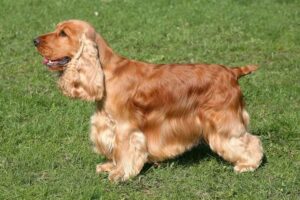
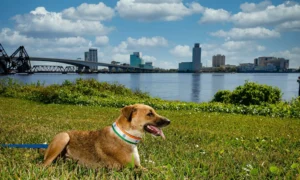
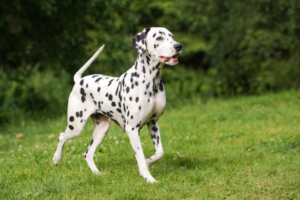
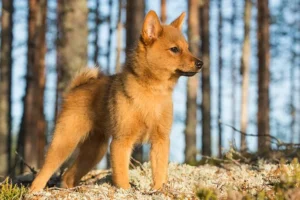



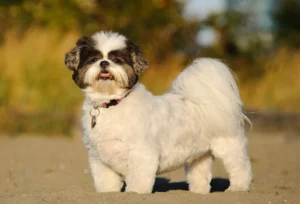
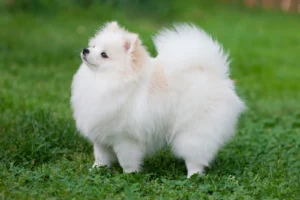
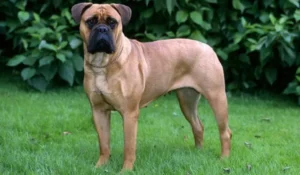
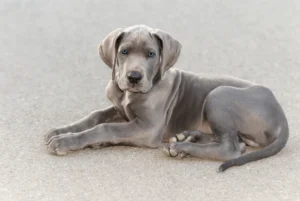
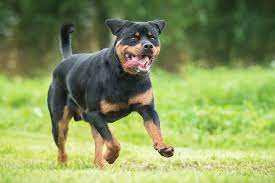
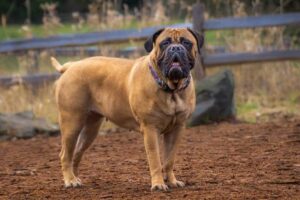
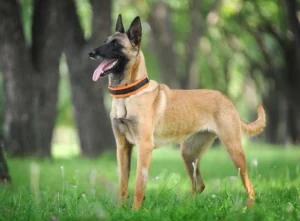

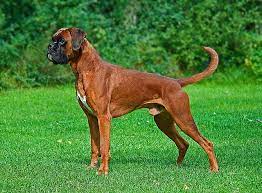




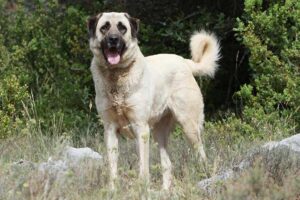
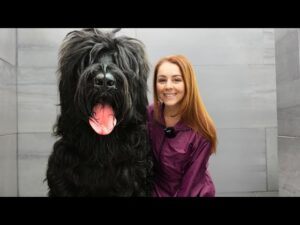
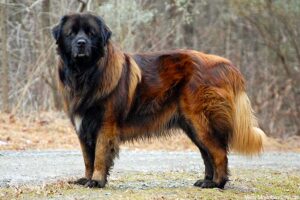







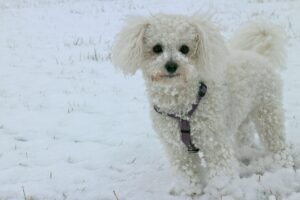


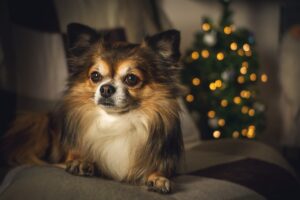


 12. Corgi: Corgis, despite their modest size, may adjust well to apartment living if given enough exercise and mental stimulation. They are wise, friendly, and devoted companions. Corgis have a moderate amount of energy and require regular exercise to stay happy and healthy.
12. Corgi: Corgis, despite their modest size, may adjust well to apartment living if given enough exercise and mental stimulation. They are wise, friendly, and devoted companions. Corgis have a moderate amount of energy and require regular exercise to stay happy and healthy.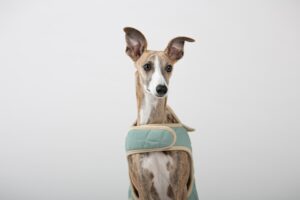 13. Greyhound: Greyhounds, contrary to popular thought, make wonderful apartment dogs.
13. Greyhound: Greyhounds, contrary to popular thought, make wonderful apartment dogs. 
